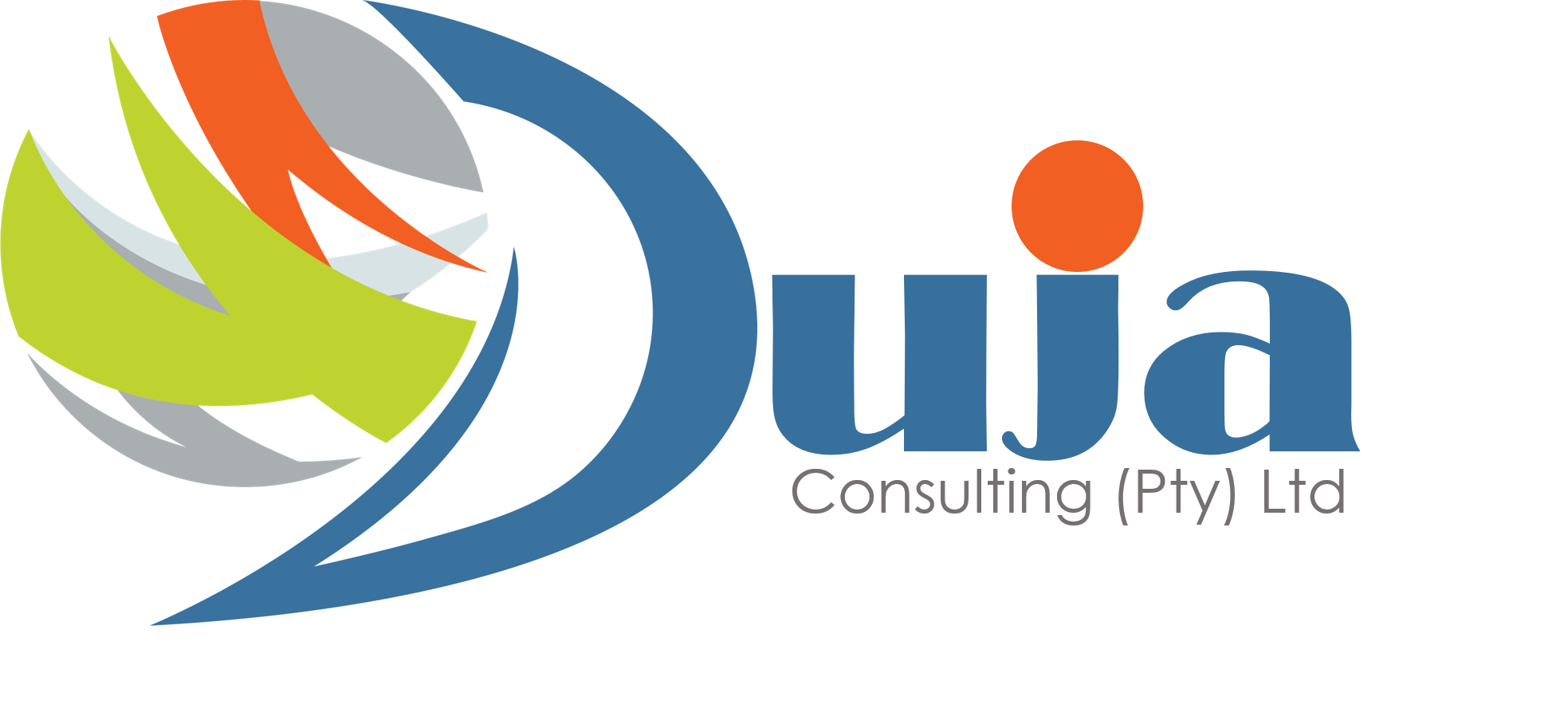Navigating Complexities: How Probity Audits Address Corporate Risks in the Public Sector
In an era of heightened accountability, probity audits are becoming indispensable for public sector integrity. Duja Consulting is proud to introduce our latest thought leadership piece: “Navigating Complexities: How Probity Audits Address Corporate Risks.”
This comprehensive paper explores how independent probity audits mitigate risks of fraud, corruption, and procurement irregularities in the public sector.
We delve into real-world examples (from emergency COVID-19 procurements to successful tenders monitored by probity auditors) and highlight frameworks and best practices that ensure transparency and fairness.
If you’re interested in how strengthened oversight can protect public resources and build trust, this is a must-read. Join the conversation on improving governance and learn how Duja Consulting’s probity audit services help organisations uphold the highest ethical standards.

Introduction
Public sector organisations today face intense scrutiny over how they manage public resources amid complex regulatory demands. High-profile procurement scandals and instances of fraud and corruption have underscored the need for stronger oversight mechanisms. Probity audits have emerged as a specialised tool to bolster integrity in these processes. Probity, which denotes honesty and integrity, in practice means acting beyond mere legal compliance so that no perception of bias or impropriety can arise. A probity audit is an independent evaluation designed to scrutinise the fairness, transparency and ethicality of organisational processes and decisions, particularly in areas most prone to corruption, fraud and conflicts of interest. In essence, probity audits serve as a safeguard to ensure public sector activities – especially procurement – are conducted above reproach. This paper explores how probity audits help public institutions navigate the complexities of corporate risk, focusing on mitigating fraud, corruption, and procurement irregularities. It outlines relevant frameworks and guidelines, real-world examples of probity audits in action, and illustrates how firms like Duja Consulting provide probity audit services to uphold integrity in the public sector.
Understanding Probity Audits in the Public Sector
Governments worldwide emphasise principles of transparency, fairness, and accountability in public administration – nowhere more so than in procurement. Probity audits are one way these principles are independently verified and reinforced. Unlike conventional financial audits that focus on accuracy of accounts, a probity audit closely examines how decisions are made and whether proper procedures and ethical standards are followed. It asks, essentially, “Was the process fair and in line with all rules and ethical norms?” This involves reviewing each stage of a decision or procurement process – from planning and tendering to evaluation and contract award – to confirm that integrity has been maintained throughout. Many public sector guidelines encourage the use of probity auditors especially for high-value or high-risk projects. For example, Queensland’s procurement framework provides for engaging a probity auditor to “provide independent scrutiny during, or at the end of, a procurement process” and to objectively confirm whether prescribed probity requirements were met. The probity auditor operates independently of the project team, ensuring an unbiased review. This independent assurance can then be reported to senior management or oversight bodies, giving confidence that the process was conducted properly. By design, probity audits dovetail with broader governance structures – they complement internal controls and internal audits by providing an extra layer of assurance focused on ethics and compliance in decision-making processes. In summary, a probity audit is a proactive integrity check: it verifies that public sector activities not only comply with laws and policies but also meet the higher bar of fairness and transparency expected in the public sphere.
Risks in Public Sector Procurement: Fraud, Corruption and Irregularities
Public sector procurement – the process of acquiring goods and services with public funds – is a primary area of focus for probity audits because it is particularly vulnerable to misconduct. Vast sums of money are at stake, and numerous stakeholders (suppliers, contractors, officials) are involved, creating opportunities for ethical lapses. Common procurement risks include fraud, such as submission of false invoices or delivery of sub-standard goods for full payment, and corruption, such as bribery of officials, collusion among bidders, or undue influence in contract awards. Investigations by anti-corruption bodies show that procurement systems are open to improper influence at multiple points: bribery, kickbacks, acceptance of gifts or benefits, collusion between vendors, and the leaking of confidential bid information are all documented risks. In fact, studies have found that in some countries a large proportion of corruption cases relate to government procurement – for example, research in Indonesia estimated that about 70% of corruption cases before procurement reforms were linked to goods and services procurement. Even in more regulated environments, procurement irregularities (breaches of procedure or policy) are common. These include failures to follow competitive bidding requirements, inadequate due diligence on suppliers, or poor contract management leading to cost overruns. While not every irregularity is deliberate fraud or bribery, even inadvertent non-compliance – such as a lax evaluation process or a conflict of interest not declared – can result in unfair or inefficient outcomes. The Auditor-General of South Africa noted in recent reports that despite improvements in financial management, “instances of irregular, fruitless, and wasteful expenditure continue to surface”, highlighting persistent weaknesses in procurement control. Such irregular expenditure often signals that procurement rules were bypassed or not properly enforced. The consequences of these risks are severe: financial losses for the state, unjustly awarded contracts (which may lead to sub-par services or infrastructure), legal challenges, and erosion of public trust. In the public sector, the appearance of corruption can be just as damaging as actual malfeasance – hence the emphasis on probity, i.e. demonstrable integrity. Managing these risks is a complex task because it requires both tight procedural controls and a culture of ethics. This is where probity audits come into play, providing structured scrutiny specifically aimed at uncovering and addressing fraud, corruption, and procedural failings in procurement activities.
Frameworks and Guidelines Supporting Probity Auditing
A strong regulatory framework underpins effective probity auditing in the public sector. Around the world, various laws, guidelines, and standards set expectations for integrity in public procurement. For instance, the OECD’s Principles for Integrity in Public Procurement highlight transparency, accountability, good management and prevention of misconduct as key pillars – objectives that probity audits directly serve by checking whether procurement processes embody these pillars in practice. In many jurisdictions, procurement legislation explicitly mandates fairness and openness. South Africa’s Public Finance Management Act (PFMA) and Municipal Finance Management Act (MFMA), for example, require that public procurements be conducted in accordance with a system that is fair, equitable, transparent, competitive, and cost-effective. Similarly, the UK’s public contracts regulations and guidance stress avoidance of conflicts of interest and equal treatment of bidders. Probity audits act as a mechanism to ensure these principles are upheld. In Australia, where the concept of probity auditing is well developed, governments have published probity guidelines and even require probity plans for particularly high-value or sensitive projects. These plans outline how integrity will be safeguarded (e.g. through appointing probity advisors or auditors, defining conduct protocols, etc.). The Queensland Government’s guidelines explicitly differentiate between probity advisors and probity auditors: a probity advisor offers guidance during a procurement to prevent issues, while a probity auditor “expresses an objective opinion about whether the prescribed probity requirements have been met” at key stages or conclusion of the process. Engaging a probity professional is recommended when a project is especially complex or sensitive, to provide extra assurance that the outcome will be beyond reproach. In short, the prevailing frameworks call for both robust internal controls and, when needed, independent oversight. Probity audits align with international anti-corruption efforts as well. For example, the United Nations Convention Against Corruption (UNCAC) encourages transparent procurement practices and effective, independent audit mechanisms to prevent abuse. Transparency International’s concept of Integrity Pacts, where an independent monitor observes a procurement to deter corruption, is another approach aligned with probity auditing. All these frameworks and tools share the goal of injecting transparency and accountability into procurement. By referencing established guidelines and criteria, probity auditors ensure that their evaluations are grounded in recognised standards – be it local procurement laws, treasury regulations, or ethical codes. This not only lends credibility to their findings but also helps public entities demonstrate compliance with both the letter and spirit of the law.
Mitigating Fraud and Corruption through Probity Audits
Probity audits directly address the risks of fraud and corruption by introducing rigorous, independent checks at every critical juncture of a process. One of their primary contributions is enhancing transparency and accountability. A probity audit demands that decisions and actions in a project are well-documented, justified, and open to scrutiny. This level of scrutiny makes it difficult for unethical behaviour to remain hidden. For example, auditors will review procurement records to ensure that each tender submission was logged and evaluated according to stated criteria, with no unexplained deviations. By shining a light on the process, probity audits deter individuals from engaging in bribery or bid-rigging, since they know an independent party is likely to detect anomalies. In practice, organisations that undergo probity audits are pressed to maintain clearer audit trails and rationales for their choices. This not only deters fraud but also creates a culture of accountability – employees and officials are aware that their decisions could be reviewed at any time for integrity.
Another key aspect is preventing and detecting conflicts of interest – a common vehicle for corruption. Probity auditors probe whether any person involved in a decision had an undisclosed personal interest in the outcome. They check conflict of interest declarations and may even verify connections between staff and vendors. By catching conflicts early or ensuring they are declared and managed, probity audits help neutralise opportunities for corrupt favouritism. Public sector probity guidelines often require officers to act so that there is not even a perception of bias or nepotism. A probity audit tests compliance with those expectations, for instance confirming that no evaluation panel member was involved in a bidder company or that gift registers have been kept and reviewed. In doing so, it reinforces a message of zero tolerance for undue influence.
Probity audits also contribute to fraud risk mitigation by examining transactional details for red flags. Modern probity auditing may employ data analytics to scan procurement data for anomalies – such as identical bids (potential collusion), unusual price patterns, or repeated awards to the same vendor just below competitive quoting thresholds. This proactive analysis can uncover fraudulent schemes that traditional oversight might miss. Indeed, leveraging technology is increasingly seen as a best practice in probity auditing: comprehensive data reviews can “spot irregular patterns or risky suppliers” much faster and more reliably. The knowledge that such robust analysis is in play has a deterrent effect on would-be fraudsters within or outside the organisation. Furthermore, probity auditors examine compliance with financial controls – for example, checking that payments were only made against valid contracts and approved budgets. In doing so, they may catch fraud indicators such as invoices that do not match delivered goods, or payments made without proper approvals. By identifying these issues early, probity audits can save organisations from severe financial losses and legal consequences. Early detection is critical: an undetected fraud can fester and grow, whereas one flagged promptly can be stopped and investigated. Thus, probity audits act as a “robust defence mechanism” against fraud and corruption by implementing stringent checks and balances and signalling to all participants that malfeasance will be caught.
Ensuring Compliance and Preventing Irregularities
Beyond overt corruption and fraud, probity audits help organisations avoid procurement irregularities – instances where procedures or rules are not properly followed. These irregularities, even if stemming from error or urgency rather than ill intent, can undermine fair competition and value for money. A core function of probity audits is to verify compliance with all relevant laws, regulations, and internal policies throughout a process. Public sector procurement is governed by a myriad of rules: from advertisement and bid timelines, to evaluation criteria, to documentation requirements and approval hierarchies. Probity auditors systematically review whether each of these requirements has been met. For example, they will check that a tender was advertised for the required minimum period, that no bidder was allowed to alter their bid after closing time, and that the evaluation committee scored bids strictly according to the published criteria. If any deviations or procedural lapses occurred, the auditors will flag them. This independent verification of compliance serves two purposes. First, it prevents inadvertent errors or corner-cutting from escalating into major issues. Often, public officials face pressure to expedite projects or may be unfamiliar with complex rules, leading to mistakes. A probity audit catches those mistakes (such as a missing conflict-of-interest form or an skipped step in the evaluation) in time to rectify them before they invalidate the process. Second, it provides assurance to oversight bodies and the public that the outcome of the procurement is legitimate. In one notable example, a probity auditor overseeing a large public tender in 2023 concluded that “all the processes were in compliance with prescribed legislation and policies”, effectively certifying that the department adhered to the procurement framework to the letter. This kind of statement, coming from an independent auditor, is powerful; it can pre-empt legal challenges from disgruntled bidders and instil confidence that no irregularities tainted the result. Indeed, when processes are compliant and well-documented, there is little room for allegations of unfairness.
By enforcing procedural discipline, probity audits also help avoid the costs associated with botched tenders. An irregularity can lead to a tender being cancelled or re-run, causing delays in service delivery and potential financial waste. Even worse, if an undetected irregularity is later exposed, it might result in a contract being invalidated or public funds having to be recovered. Probity audits significantly reduce these risks by catching issues before contracts are signed. They essentially serve as a quality assurance step for governance: much like a safety inspector prevents engineering flaws, a probity auditor prevents governance flaws. This ensures efficient use of funds and that the public entity gets what it paid for under proper terms. In summary, probity audits mitigate corporate risk in the public sector not only by deterring malfeasance but by actively strengthening compliance and procedural rigour, thereby preventing the “irregularities” that can lead to wasteful expenditure or legal challenges.
Real-World Examples and Lessons Learned
Contemporary examples from the public sector illustrate both the consequences of lacking probity oversight and the benefits when such audits are properly employed.
Case in point #1: COVID-19 emergency procurement (South Africa, 2020)
At the height of the COVID-19 pandemic, governments worldwide engaged in emergency procurement of medical supplies and services. In South Africa, a massive R500 billion relief package was rolled out under urgent conditions. A subsequent “special audit” by the Auditor-General – essentially a probity-focused review of the emergency spending – revealed alarming lapses in integrity. Normal competitive bidding rules had often been bypassed under the guise of urgency, allowing direct contract awards without adequate justification. The audit uncovered numerous instances of overpricing and suppliers with dubious credentials receiving lucrative contracts. In other words, the suspension of standard controls opened the door to fraud and favouritism. The real-time audit of COVID-19 procurement flagged these problems within months, enabling some corrective action (for example, some corrupt contracts were cancelled and payments stopped). This early detection limited the damage – had a review occurred only years later, far more public money might have been lost. However, the case also demonstrated that detection alone is not enough; initially, many of the Auditor-General’s recommendations were not implemented swiftly, so a second audit found repeat issues. The lesson was clear: probity audits must be accompanied by decisive follow-up. In response, South African authorities strengthened consequence management – the Auditor-General was even given enhanced powers to issue binding remedial orders and refer serious breaches for investigation. Another outcome was a call to embed probity auditors within emergency response teams in future crises, to ensure that even when procurement must be expedited, it does not abandon oversight. Thus, the COVID-19 case underlined both the value of probity audits (in catching misconduct early and preventing even worse outcomes) and the need for organisations to act on audit findings to truly mitigate risk.
Case in point #2: Smart driving licence card tender (South Africa, 2023)
In a more positive example, probity auditing was proactively integrated into a major procurement – with excellent results. The National Department of Transport undertook a high-stakes project to procure new smart driving licence cards, a contract of significant value and public importance. Conscious of past tender controversies, the Department engaged an independent probity auditor from the very start of the process. This auditor oversaw every stage, from drafting the tender documents and advertising, through to bid evaluation and final adjudication. The presence of an impartial observer helped ensure that rules were followed: for instance, the auditor could verify that the bid scoring was done strictly according to the published criteria and that no bidder received preferential treatment. By the end, the probity auditor was able to publicly affirm that the tender was conducted in full compliance with applicable legislation and policies. The outcome was a fair and uncontested award – the winning bidder was announced (a company named IDEMIA) and, notably, none of the losing bidders lodged a legal challenge alleging bias. In a procurement environment often marred by disputes, this was a remarkable validation of the process. The proactive probity audit likely headed off problems before they could take root: its very presence would have dissuaded any participant from attempting bribery or collusion, knowing an expert was watching. Indeed, this case showed that probity audits can “close off” the typical avenues for corruption – for example, ensuring no insider information leaks and that conflict-of-interest protocols are strictly observed meant that there was little opportunity for corrupt interference. There were also efficiency gains. While adding an audit step is sometimes assumed to slow things down, the licence tender suggests the opposite: by promptly resolving procedural uncertainties and preventing integrity breaches that cause projects to collapse, the probity audit helped avoid the far longer delays that occur when a tender is later nullified or sued over. The cost-benefit was evident – the probity audit’s cost was minor compared to the potential cost of a failed or scandal-ridden tender. As one analysis noted, investing in a probity audit for critical projects is a “preventive cost that is small compared to the huge costs of a failed or fraudulent tender”. This successful example has set a precedent; other departments and municipalities are now more inclined to emulate it, institutionalising probity audits as a standard component of major public procurements.
Best Practices for Effective Probity Auditing
Experience has shown that certain best practices enhance the effectiveness of probity audits in mitigating risks:
- Early Integration: Involve probity auditors at the planning stage of projects, not just after problems emerge. Early or concurrent audits catch issues before they compromise the integrity of the process.
- Clear Scope and Criteria: Define the probity audit’s scope and benchmarks upfront. Organisations should establish clear probity guidelines or checklists (many governments publish such guidelines) so that everyone understands the standards being applied. This ensures the audit covers all relevant ethical and compliance aspects, not just a narrow rule-check.
- Independence: Ensure probity auditors are independent and free from conflicts of interest. Engaging external experts or consultants with no stake in the outcome bolsters objectivity. An independent auditor should have full access to information and the authority to report findings without interference.
- Technological Tools: Use data analytics and digital tools to enhance the audit. Automation can analyse procurement data sets to flag anomalies (for example, repetitive patterns suggesting bid rotation or suspicious supplier histories) that humans might overlook.
- Capacity and Training: Auditors should be well-versed in procurement law, forensic auditing and fraud risk assessment. Likewise, the audited organisation should train its staff in ethics and procurement rules, fostering a cooperative environment for the audit. Skilled auditors and receptive, trained staff make the process smoother and more impactful.
- Follow-up Mechanisms: Treat the probity audit report as a living document that demands action. Management must address recommendations promptly; oversight bodies or audit committees should track the implementation of fixes and enforce consequences for breaches. A probity audit that identifies issues is only as valuable as the corrective measures that follow.
By adhering to these practices, public sector entities can maximise the risk-mitigating benefits of probity audits. Conversely, ignoring these can diminish the audit’s impact – for example, if leadership does not support the auditors or fails to act on findings, even the best probity audit will not prevent recurring problems. Thus, commitment from the top and an organisational culture that values integrity are indispensable complements to the audit process.
Duja Consulting’s Role and Conclusion
In an era of heightened accountability, probity audits have proven to be an effective instrument for navigating the complexities of risk in the public sector. They provide assurance that processes are not only legally compliant but conducted with the highest integrity, thereby addressing the triad of fraud, corruption, and irregularities that threaten public trust. Through independent scrutiny, probity audits shine a light on malfeasance and poor practices before they cause irreparable harm. They help build a culture where ethical conduct is the norm and where stakeholders – from citizens to oversight authorities – can have confidence in the fairness of outcomes. The real-world cases discussed demonstrate that when probity audits are employed proactively and supported by strong follow-up actions, they do make a difference: preventing corrupt contracts, saving money, and even improving project outcomes by avoiding disputes and delays.
It is worth noting that implementing probity audits effectively often requires specialised expertise and an external perspective. This is where firms like Duja Consulting serve as valuable partners. Duja Consulting provides probity audit services to public sector clients, bringing an independent, professional eye to complex projects and procurement processes. As a provider of such services, Duja Consulting leverages its expertise in audit, forensic investigation, and procurement best practices to help organisations identify vulnerabilities and strengthen their controls. Our team is familiar with the relevant frameworks and guidelines discussed, and we tailor our approach to ensure compliance with local regulations while upholding universal principles of integrity. In doing so, we position our clients to achieve not just compliance, but true excellence in governance.
In conclusion, probity audits are a pivotal response to the corporate risks faced by public sector entities. By rigorously examining procedures for probity – fairness, transparency, and accountability – these audits mitigate the risk of fraud and corruption, ensure adherence to procurement rules, and ultimately safeguard the public interest. In a climate where citizens demand honest government and value for money, probity audits reinforce the ethical foundation of public service. Public sector organisations are encouraged to integrate probity audits into their risk management and governance frameworks, especially for high-risk endeavours. With the support of experienced probity audit professionals like Duja Consulting, organisations can confidently navigate the complexities of modern governance, knowing that robust checks and balances are in place to address corporate risks before they escalate.
The message is clear: strengthening probity is not only about preventing scandal – it is about promoting a culture of integrity that underpins sustainable, effective public sector performance.














